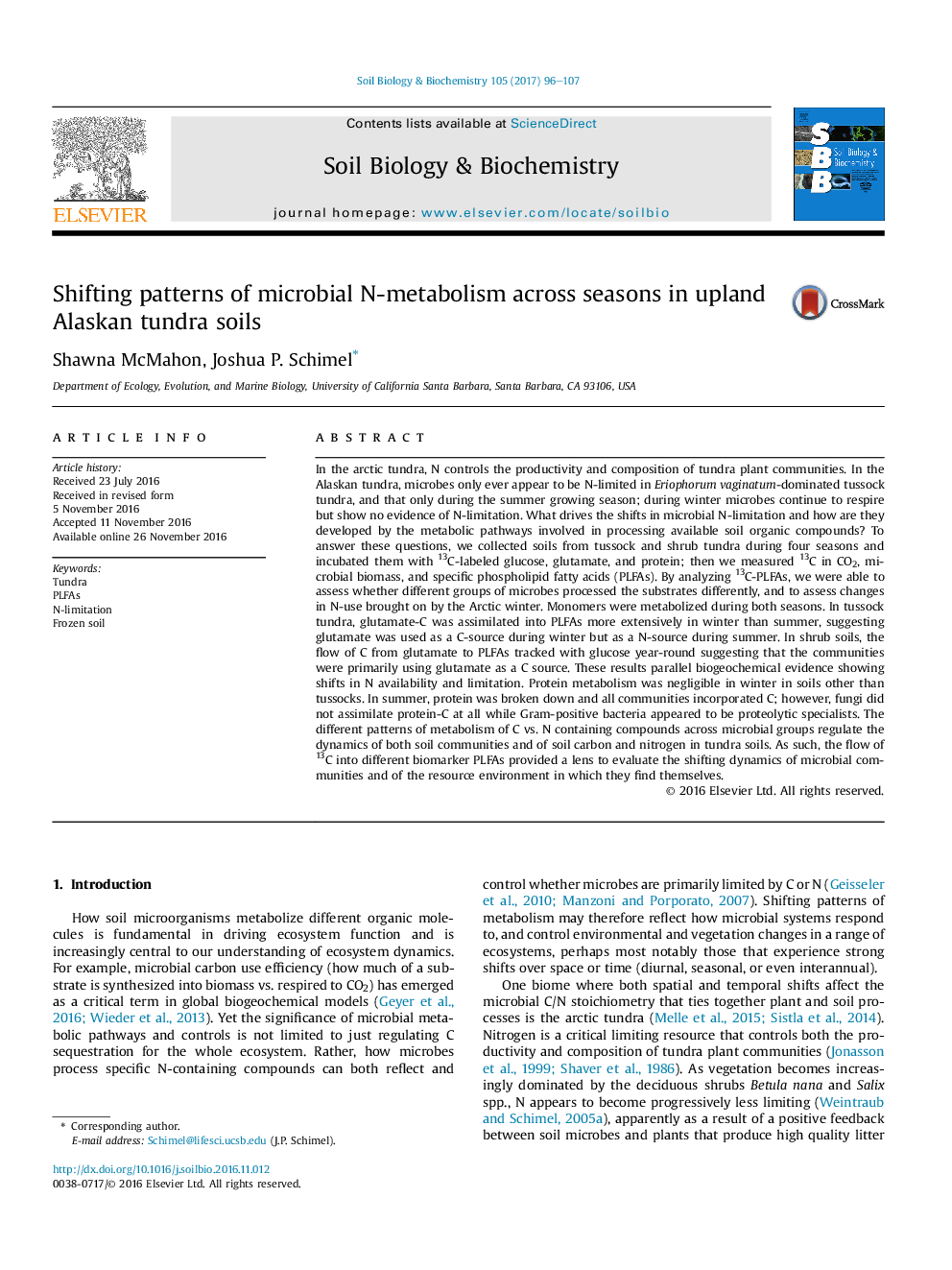| کد مقاله | کد نشریه | سال انتشار | مقاله انگلیسی | نسخه تمام متن |
|---|---|---|---|---|
| 5516507 | 1542579 | 2017 | 12 صفحه PDF | دانلود رایگان |
- Soil microbes assimilated C from glucose and glutamate in both summer and winter.
- When microbes were N-limited (tussock tundra during the summer), glutamate was not assimilated into PLFAs.
- In contrast, when microbes appeared C-limited, glutamate and glucose were assimilated comparably into PLFAs.
- Fungi did not assimilate glutamate-C during the summer, suggesting N-limitation.
- Gram-positive bacteria appeared to be proteolytic specialists.
In the arctic tundra, N controls the productivity and composition of tundra plant communities. In the Alaskan tundra, microbes only ever appear to be N-limited in Eriophorum vaginatum-dominated tussock tundra, and that only during the summer growing season; during winter microbes continue to respire but show no evidence of N-limitation. What drives the shifts in microbial N-limitation and how are they developed by the metabolic pathways involved in processing available soil organic compounds? To answer these questions, we collected soils from tussock and shrub tundra during four seasons and incubated them with 13C-labeled glucose, glutamate, and protein; then we measured 13C in CO2, microbial biomass, and specific phospholipid fatty acids (PLFAs). By analyzing 13C-PLFAs, we were able to assess whether different groups of microbes processed the substrates differently, and to assess changes in N-use brought on by the Arctic winter. Monomers were metabolized during both seasons. In tussock tundra, glutamate-C was assimilated into PLFAs more extensively in winter than summer, suggesting glutamate was used as a C-source during winter but as a N-source during summer. In shrub soils, the flow of C from glutamate to PLFAs tracked with glucose year-round suggesting that the communities were primarily using glutamate as a C source. These results parallel biogeochemical evidence showing shifts in N availability and limitation. Protein metabolism was negligible in winter in soils other than tussocks. In summer, protein was broken down and all communities incorporated C; however, fungi did not assimilate protein-C at all while Gram-positive bacteria appeared to be proteolytic specialists. The different patterns of metabolism of C vs. N containing compounds across microbial groups regulate the dynamics of both soil communities and of soil carbon and nitrogen in tundra soils. As such, the flow of 13C into different biomarker PLFAs provided a lens to evaluate the shifting dynamics of microbial communities and of the resource environment in which they find themselves.
Journal: Soil Biology and Biochemistry - Volume 105, February 2017, Pages 96-107
